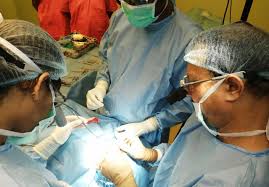
Plastic surgery is a broad medical specialty that focuses on reconstructing, repairing, or enhancing the form and function of the human body. It can be broken down into two main categories: reconstructive surgery and cosmetic (aesthetic) surgery.
1. Reconstructive Surgery
This type of surgery is performed to restore the function and appearance of body parts that have been damaged due to:
- Trauma: Accidents or injuries that cause deformities or loss of function, like burns or severe facial fractures.
- Congenital Defects: Conditions present at birth, such as cleft lips and palates or malformed ears.
- Disease or Infection: Surgical removal of cancerous tissue (such as a mastectomy) or infections that affect appearance or function (e.g., skin cancer).
- Scar Revision: To minimize or eliminate the appearance of scars resulting from injuries, surgeries, or burns.
2. Cosmetic (Aesthetic) Surgery
This type of surgery is elective and aims to improve or enhance the appearance of a person. People may choose cosmetic surgery to boost their self-esteem, improve physical features, or slow signs of aging. Some of the most common cosmetic procedures include:
- Rhinoplasty: Surgery to reshape the nose.
- Facelift: Surgery to reduce wrinkles and sagging in the face.
- Breast Augmentation/Reduction: Surgery to increase or decrease the size of the breasts.
- Liposuction: Removal of excess fat to reshape body contours.
- Tummy Tuck (Abdominoplasty): Removal of excess skin and fat from the abdominal area.
- Botox and Fillers: Non-surgical, minimally invasive treatments to reduce wrinkles or add volume to certain areas of the face.
Goals of Plastic Surgery
- Restoration of Function: Reconstructive surgeries aim to restore the functionality of body parts affected by trauma, disease, or congenital conditions.
- Aesthetic Enhancement: Cosmetic surgeries enhance the appearance of body parts to meet personal or societal standards of beauty.
Risks and Considerations
While plastic surgery can significantly improve a person’s appearance or restore functionality, it does come with risks, including:
- Complications: Infection, bleeding, or scarring.
- Anesthesia Risks: Potential reactions to anesthesia during surgery.
- Emotional and Psychological Factors: It’s essential for patients to have realistic expectations and understand the emotional and psychological impacts of undergoing surgery
.
- Recovery Time: Some surgeries may require long periods of recovery with restrictions on movement or activities.
Choosing a Plastic Surgeon
When considering any form of plastic surgery, it’s critical to choose a board-certified, experienced plastic surgeon. This ensures that the surgeon has the necessary training and expertise to perform safe and effective procedures.
Plastic surgery continues to evolve with new techniques, technologies, and less invasive options, but it’s important to thoroughly research options and understand the potential benefits and drawbacks before deciding.




Leave a Reply